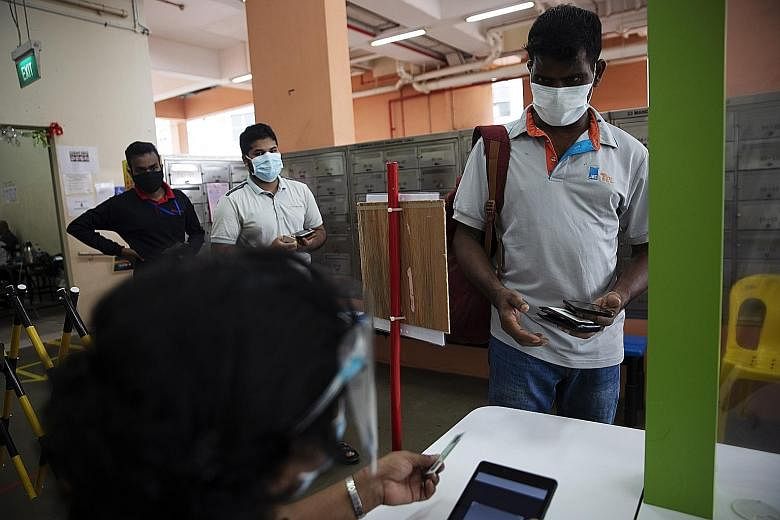Q: How would you know if workers who visit your home or workplace are free of Covid-19?
A: As Singapore continues to reopen, many people may wish to complete long-awaited repairs or service amenities at home or in the office.
Understandably, some may fear inviting strangers into their homes during a pandemic.
Short of a swab or blood test, it is impossible to tell for sure if anyone - worker or not - is free of Covid-19, especially given the asymptomatic nature of the virus.
But several precautions have been taken by the authorities to reduce the virus' spread in the community, and there are steps you can take to give yourself additional reassurance.
PRECAUTIONS FOR A SAFE RESTART
The authorities have mandated numerous rules to ensure a safe reopening of the economy. These include safe management measures for businesses as well as workers.
For example, at the workplace, seating arrangements need to be safely distanced, and workers' temperatures have to be taken daily.
To reduce interactions between workers, working from home has become the default arrangement, and socialisation between workers is forbidden. Masks have to be worn at all times while at work.
More specifically, there are additional rules for foreign workers in low-or mid-skilled work that require them to enter workplaces or offices, such as repairs or minor construction and electric work.
All work permit and S Pass holders must download FWMOMCare, the Ministry of Manpower's mobile app, and use it to report twice a day to the authorities, providing details of their health and temperature.
Foreign workers serving their stay-home notice outside dedicated facilities from Aug 11 are also tagged with a wearable electronic device that will alert the authorities if they leave their residence.
Workers staying in dormitories who can leave for work would have a "green" AccessCode which they can show on their phones.
This indicates that they have fulfilled several requirements, including that they have tested negative for Covid-19, and their employer has been approved by the authorities and has implemented measures like staggered transport arrangements.
Employers in the construction sector would have to make sure cohorting arrangements are in place to prevent mixing of workers from different work sites.
Workers would also have to download TraceTogether and use SafeEntry when they enter workplaces.
On top of this, the authorities have required routine testing of all such workers every 14 days to quickly pick up and isolate any cases of Covid-19.

-
AskST
-
If you have a question, e-mail us at askst@sph.com.sg
PRECAUTIONS YOU CAN TAKE
That said, workers - foreign or local - living in non-dormitory residences are not inherently at higher risk of transmitting the virus.
As with other visitors to your home, there are several things you can do if you feel the need to take extra precautions against exposure.
The Health Ministry has said that household visitors are strongly encouraged to observe safe management principles, including wearing a mask, keeping a safe distance of at least 1m, minimising physical contact and washing hands regularly.
You and your family should wear masks, and make sure the worker also dons one while he is in your home. One is already required to wear a mask at work.
You may also wish to invest in a contactless method of temperature checking, such as an infrared thermometer, for any visitor to your home.
You can also provide hand sanitiser at the entrance to your home. Many offices already have similar thermometers or use thermal scanners, and also have hand sanitiser dispensers.
While the worker is carrying out his work, you can maintain a safe distance or go to a separate room in your home or office.
Opt for a contactless means of paying the worker if possible, for example, by using digital payment mobile apps, and avoid shaking the worker's hand when showing your appreciation for the work.
After he leaves, you may wish to disinfect the surfaces he touched, including doorknobs and light switches.












